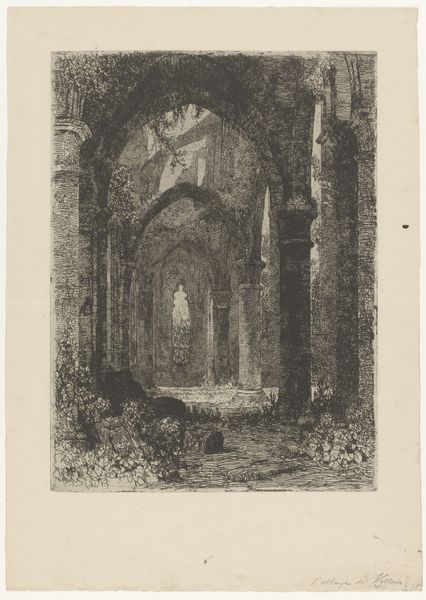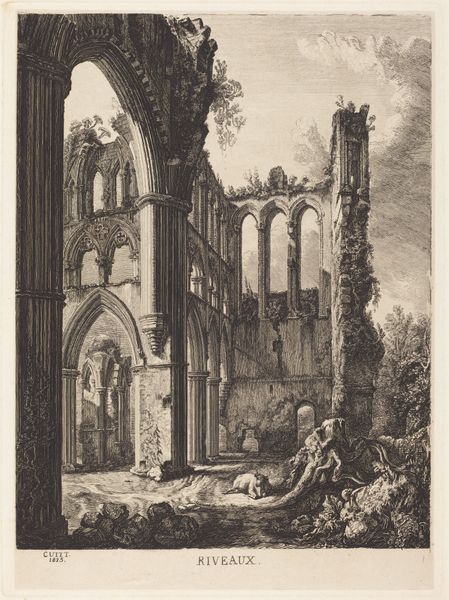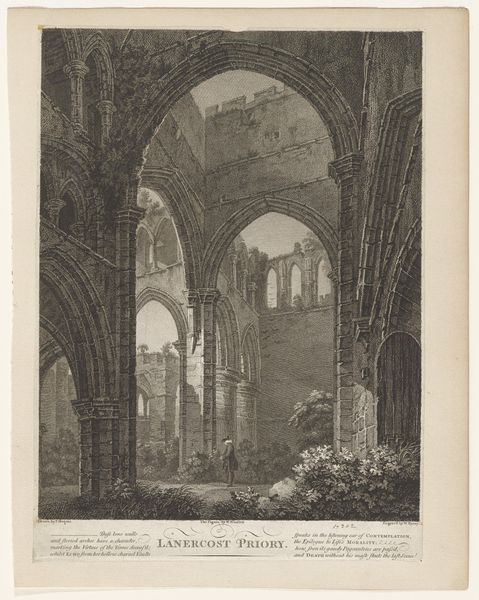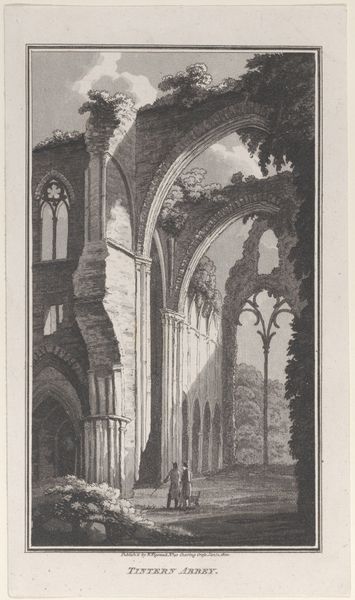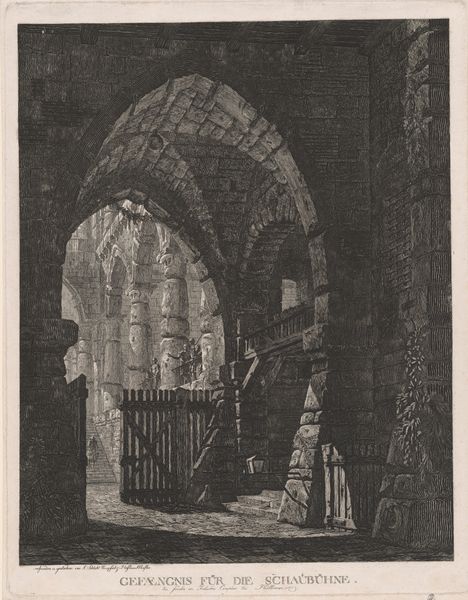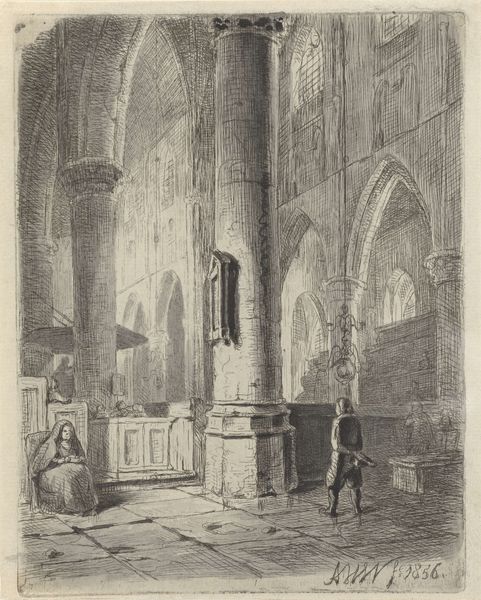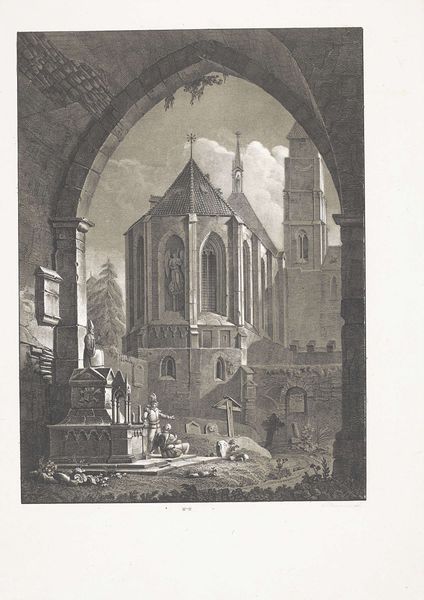
print, etching, engraving, architecture
# print
#
etching
#
old engraving style
#
landscape
#
romanticism
#
engraving
#
architecture
Copyright: National Gallery of Art: CC0 1.0
George Cuitt the Younger created this rendering of Riveaux Abbey, and in it we see the iconography of ruins that carries with it the weight of history and loss. The ruined arches and crumbling columns, once symbols of strength and permanence, are now overtaken by nature. This motif echoes across time, from ancient Roman ruins depicted in Renaissance art to the Romantic landscapes of Caspar David Friedrich. These images evoke a sense of melancholy and the transience of human endeavor. The ivy, relentlessly climbing over the stonework, speaks to nature's persistent power. It is a symbol of both decay and tenacious life, reminiscent of the "horror vacui" – the fear of emptiness – that drove artists to fill every space with detail. The abbey’s silent arches trigger a deep, subconscious awareness of time's relentless passage, engaging viewers in a dialogue with the past. This conversation is not linear, but cyclical, as symbols resurface, evolve, and take on new meanings in each age.
Comments
No comments
Be the first to comment and join the conversation on the ultimate creative platform.

